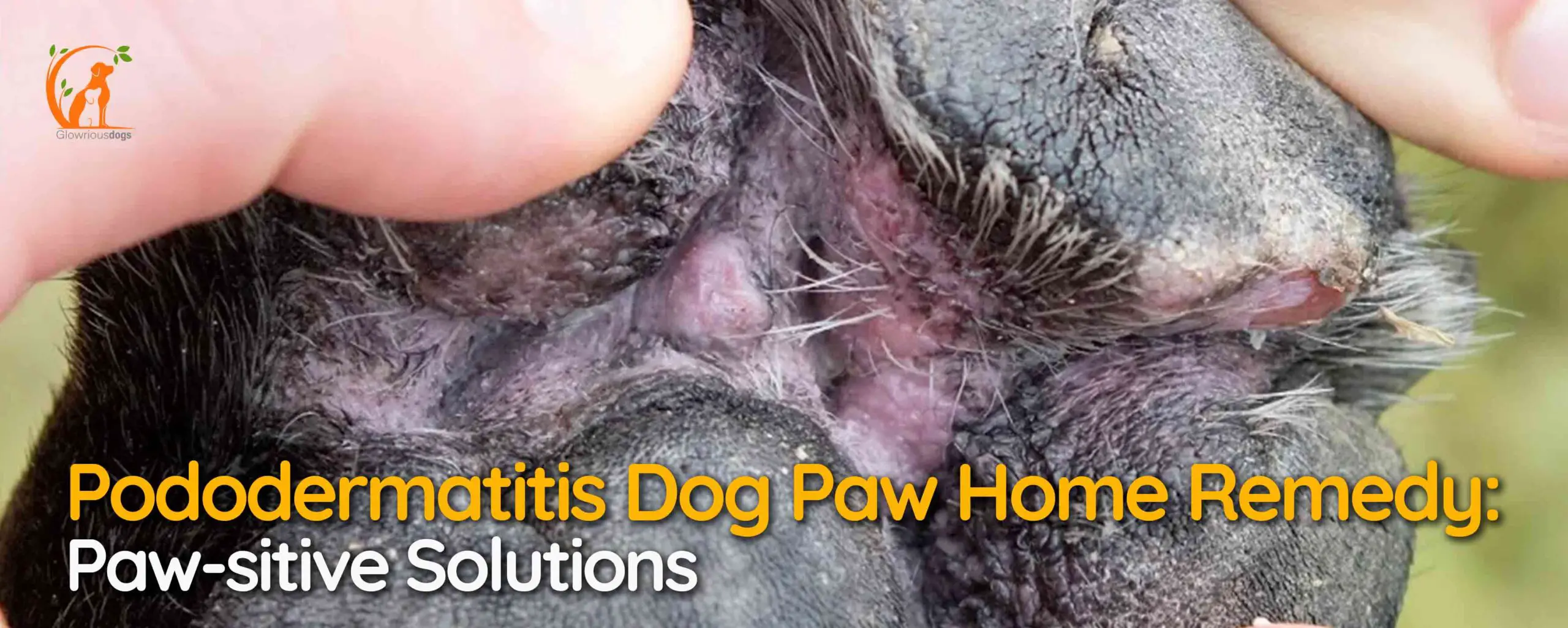Pododermatitis dog paw home remedy involves keeping the paws clean and dry to reduce inflammation and infection.
Understanding Pododermatitis In Dogs
Pododermatitis is a common condition in dogs that involves inflammation of the paws. It can be caused by a variety of factors including allergies, fungal or bacterial infections, foreign objects, or trauma. It is important for dog owners to be aware of the symptoms to watch out for. These may include redness, swelling, itching, lameness, and a foul odor. If left untreated, pododermatitis can lead to more serious complications such as secondary infections or chronic pain for the dog. Prompt treatment is crucial in managing pododermatitis and providing relief for the pet.
Natural Remedies For Pododermatitis
Proper paw hygiene is essential for preventing and treating pododermatitis in dogs. Regularly cleaning your dog’s paws and keeping them dry can help prevent infection. Use a gentle cleanser to remove dirt and debris, taking care to dry thoroughly. Avoid exposing your dog to damp environments, as it can exacerbate the condition.
Implementing dietary changes can also support healing. Incorporate omega-3 fatty acids into your dog’s diet, as they have anti-inflammatory properties. Fish oil supplements or foods rich in omega-3, such as salmon, sardines, or flaxseed, can be beneficial. Additionally, a balanced and nutrient-rich diet can boost your dog’s immune system and aid in the healing process.
| Grooming practices to prevent pododermatitis: |
|---|
| – Regularly trim your dog’s nails to prevent excessive pressure on their paws. |
| – Check for signs of irritation or inflammation between the paw pads and toes. |
| – Keep the fur around the paws short to minimize trapped moisture. |
| – Use dog-safe moisturizing products to prevent dryness and cracking. |
Soothing Home Treatments For Pododermatitis
DIY natural foot soaks can be an effective way to reduce inflammation and provide relief for your dog’s pododermatitis. A warm water and Epsom salt foot soak can help soothe irritated and itchy paws. The mixture should be diluted with one tablespoon of salt for every gallon of water. To further enhance the soothing effect, you can also add a few drops of lavender or chamomile essential oil to the soak.
Moisturizing balms and ointments are another great option for paw relief. These products help to nourish and hydrate the skin, promoting faster healing. Look for balms containing soothing ingredients like aloe vera, shea butter, and coconut oil. Applying the balm to your dog’s paws and gently massaging it in can provide immediate comfort and long-term healing.
There are also herbal remedies that can alleviate itching and discomfort associated with pododermatitis. One such remedy is calendula, which has anti-inflammatory and antimicrobial properties. You can create a soothing herbal salve by infusing dried calendula petals in olive oil and applying it to your dog’s paws. Another option is chamomile tea, which can be used as a rinse to reduce itching and inflammation.
Conclusion
To conclude, taking care of your dog’s paws is essential to prevent and treat pododermatitis. With these DIY home remedies, you can provide relief and promote healing for your furry friend’s sensitive paw pads. Remember to consult with your veterinarian for proper diagnosis and guidance.
By following these tips, you can ensure your dog’s paws stay healthy and comfortable, enhancing their overall well-being.
Frequently Asked Questions For Pododermatitis Dog Paw Home Remedy
How Do You Treat Pododermatitis In Dogs At Home?
To treat pododermatitis in dogs at home, clean the affected area with an antibacterial solution, apply a topical ointment or spray recommended by your vet, and keep your dog’s paws clean and dry. Additionally, make sure to trim their nails regularly and provide a soft and clean resting area.
What Can I Give My Dog For Pododermatitis?
To treat pododermatitis in dogs, you can give them prescribed medications, apply specialized creams or ointments, and maintain good paw hygiene. Regularly clean and dry their paws, and consider using protective booties. Consulting a veterinarian for appropriate treatment is essential.
How Do You Treat Pododermatitis In Dogs Paws?
To treat pododermatitis in dogs’ paws, follow these steps: 1. Keep the affected areas clean and dry. 2. Apply antibiotic or antifungal ointment as prescribed by your vet. 3. Use protective booties or socks to prevent further irritation. 4. Provide a balanced diet to support skin health. 5. Consult your vet for proper diagnosis and treatment plan.
What Is The Best Cure For Pododermatitis?
The best cure for pododermatitis is determined by its underlying cause. Treatment options include antibiotic medication, antifungal or antiparasitic creams, proper foot hygiene, and the use of special bandages or foot support. Consulting a veterinarian is essential for an accurate diagnosis and treatment plan.











